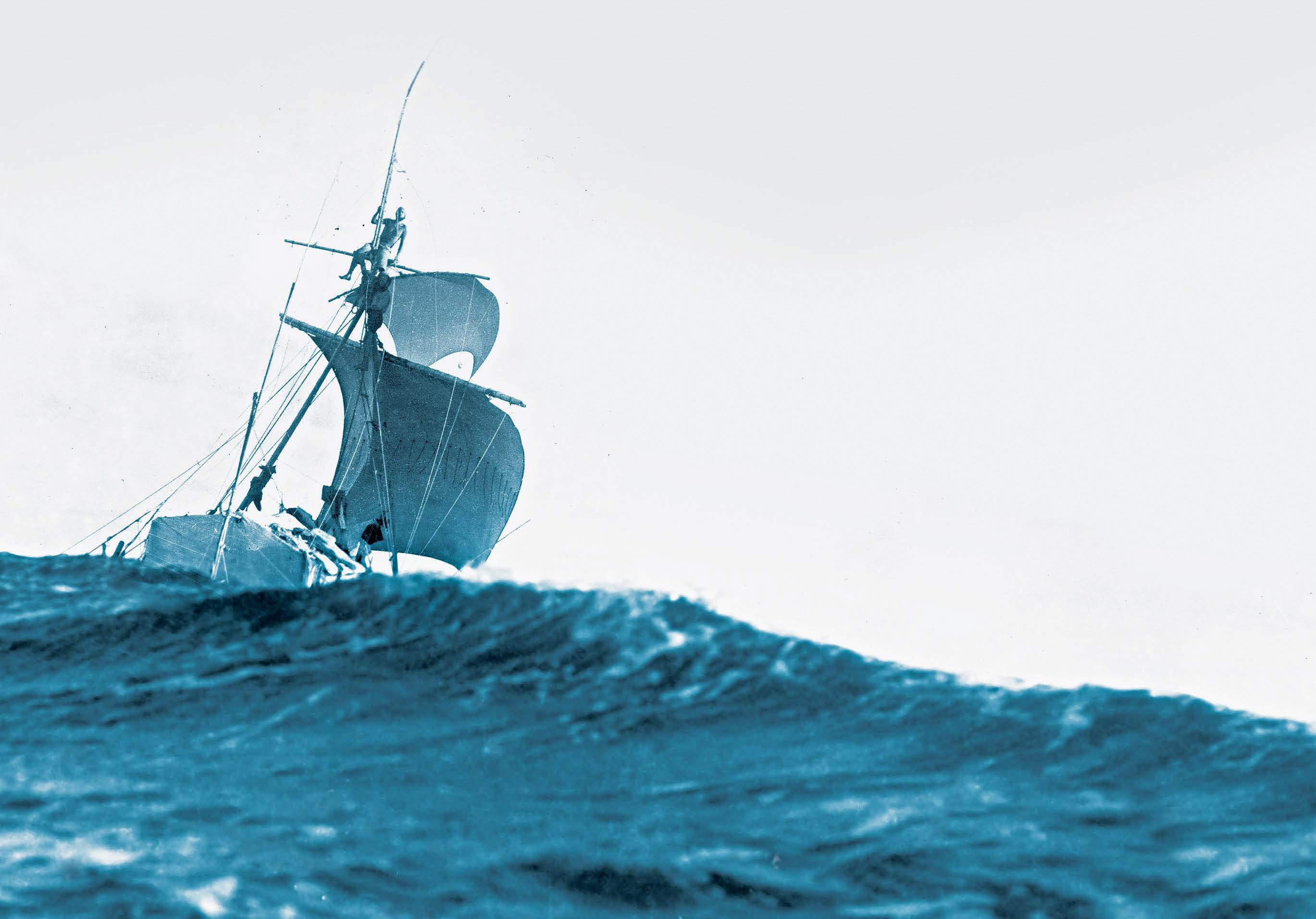
It is a dangerous experiment. In 1947, natural scientist Thor Heyerdahl (above) and five companions set sail from Peru on a wooden raft. Their destination: Polynesia, some 7,000 kilometres away. Heyerdahl wants to prove that the island world in the Pacific was originally settled from South America. Experts ridi- cule the Norwegian. Recent genetic analyses, however, have shone a new light on the adventure.
WITHIN MINUTES, the calm waters of the Pacific Ocean around the Kon-Tiki have turned into a stormy sea: dark clouds chase across the sky. Powerful waves lift the raft by five or six metres, then abruptly send it plummeting into deep, blue-black valleys. It lurches in the wind. And the logs from which the raft is built move against each other.
Thor Heyerdahl, the 32-year-old Norwegian leader of the expedition, clings to the bow in the rigging, when suddenly a cry for help cuts through the roar of the storm. A crew member has slipped from the raft. The man is drifting in the waves, trying to hold on to the rudder blade—in vain.
Heyderdahl yells commands, but no one hears him amid the roar. One crew member tries to throw a lifeline, but it’s caught in its drum. Another hurls the life jacket into the storm; the wind tosses it back onto the deck. The man in distress is barely visible among the waves. The crew cannot turn the vessel; even tacking against the wind is out of the question. Finally, another crew member jumps into the ocean. He crawls through the waves with one arm, holding a life jacket in the other arm, which is moored to the raft by a line.
Twenty metres from the raft, the two men come together between the waves. The crew hastily pulls them back on board using the line.
This story is from the {{IssueName}} edition of {{MagazineName}}.
Start your 7-day Magzter GOLD free trial to access thousands of curated premium stories, and 9,000+ magazines and newspapers.
Already a subscriber ? Sign In
This story is from the {{IssueName}} edition of {{MagazineName}}.
Start your 7-day Magzter GOLD free trial to access thousands of curated premium stories, and 9,000+ magazines and newspapers.
Already a subscriber? Sign In

BOOKS
Books review

STUDIO - Off Lamington Road by Gieve Patel
Oil on Canvas, 54 x 88 in

NEWS FROM THE WORLD OF MEDICINE
FOODS THAT FIGHT DEMENTIA

TO HELL AND BACK
The Darvaza crater in Turkmenistan is known as the Gates of Hell. I stood on its edge - and lived to tell the tale

THE SNAKE CHARMERS
Invasive Burmese pythons are squeezing the life out of Florida's vast Everglades. An unlikely sisterhood is taking them on

Sisterhood to Last a Lifetime
These college pals teach a master class in how to maintain a friendship for 50-plus years

...TO DIE ON A HOCKEY RINK
ONE MINUTE I WAS PLAYING IN MY BEER LEAGUE, THE NEXT I WAS IN THE HOSPITAL

Just Sit Tight
Broken, battered and trapped in a ravine for days, I desperate driver wonders, \"Will anyone find me?\"

Allow Me to Mansplain...
If there's one thing we know, it's this: We're a nation of know-it-alls

THE BITTER TRUTH ABOUT SUGAR (AND SUGAR SUBSTITUTES!)
It's no secret that we have a serious addiction. Here's how to cut back on the sweet stuff, once and for all.